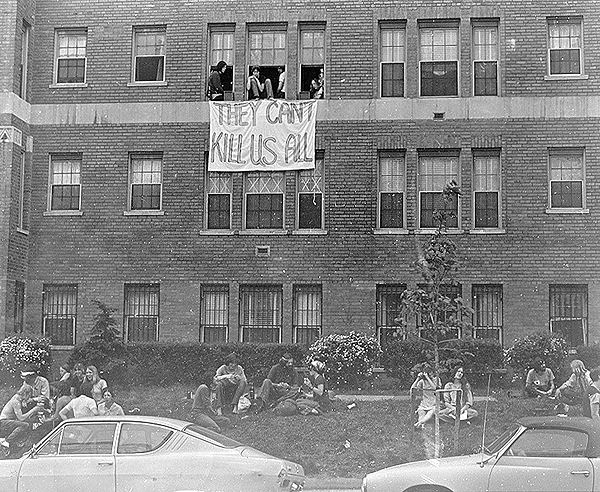Before following up on the strategy that college and university administrators were adopting to defuse the strike on many campuses, I want to tip the hat to the Canadian radicals who took a page from Richard Nixon and invaded the border town of Blaine, Washington from Vancouver on May 9.
Declaring they were doing it to strike at “sanctuaries for aggression,” the 500 or so young militants vowed that they’d go no further than 19 miles into US territory, the limit Nixon had placed on his Cambodia invasion. That far they didn’t get, retreating in good order into British Columbia after trashing the Bank of Commerce and most of the vehicles on a freight train hauling new autos. A joke, certainly, but a pretty pointed one and the first foreign invasion of any of the United States since the War of 1812.
Yesterday I wrote of how University administrators around the country were adopting or contemplating a strategy of proclaiming agreement with their protesting students and shutting down the campuses., declaring the school year ended early. This, folks who have read the third installment of this retrospective study may recall, was the strategy adopted by Yale president Kingman Brewster as he faced the May Day protests in New Haven.

